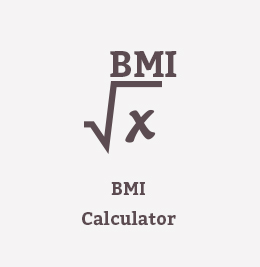What is lactose intolerance?
Lactose intolerance is a condition in which people have digestive symptoms—such as bloating, diarrhea, and gas—after eating or drinking milk or milk products.
Defining lactase deficiency and lactose malabsorption, which can lead to lactose intolerance:
- Lactase deficiency. In people who have a lactase deficiency, the small intestine produces low levels of the enzyme lactase and cannot digest much lactose.
- Lactose malabsorption. In lactose malabsorption, undigested lactose passes to the colon from the small intestine. In the colon, bacteria break down undigested lactose and create fluid and gas. Lactase deficiency may cause lactose malabsorption.
Note: Not everyone with lactase deficiency or lactose malabsorption have digestive problems. Most people with lactose intolerance can eat or drink some amount of lactose without having digestive symptoms.
There are Four types of lactase deficiency which may lead to lactose intolerance.
I will focus on Primary Lactase Deficiency, the most common type of lactase deficiency. In people with this condition, the enzyme lactase gets made less and less over time. This decline often begins at about age 2; however, the decline may begin later. Children who have lactase deficiency may not experience symptoms of lactose intolerance until late adolescence or adulthood. Researchers have discovered that some people inherit genes from their parents that may cause a primary lactase deficiency.
Who is more likely to have lactose intolerance?

In the United States, some ethnic and racial populations are more likely to have lactose intolerance than others, including African Americans, Hispanics/Latinos, American Indians, and Asian Americans. The condition is least common among Americans of European descent.
What are the symptoms of lactose intolerance?
Common symptoms of lactose intolerance include:
- abdominal bloating, a feeling of fullness or swelling in the abdomen
- abdominal pain
- diarrhea
- gas
- nausea
Symptoms occur 30 minutes to 2 hours after consuming milk or milk products
How do you diagnose lactose intolerance?
A health care provider makes a diagnosis of lactose intolerance based on:
- Medical, family, and diet history, including a review of symptoms
- A physical exam
- Medical tests
- A health care provider may recommend eliminating all milk and milkproducts from a person’s diet for a short time to see if the symptoms resolve. Symptoms that go away when a person eliminates lactose from his or her diet may confirm the diagnosis of lactose intolerance.
Medical tests:
- Hydrogen breath test: This test measures the amount of hydrogen in a person’s breath. Normally, only a small amount of hydrogen is detectable in the breath when a person eats or drinks and digests lactose. However, undigested lactose produces high levels of hydrogen. For this test, the patient drinks a beverage that contains a known amount of lactose. A health care provider asks the patient to breathe into a balloon-type container that measures breath hydrogen level. In most cases, a health care provider performs this test at a hospital, on an outpatient basis. A health care provider will tell the patient what foods or medications to avoid before the test.
Milk Allergy vs. Lactose Intolerance:
- People sometimes confuse lactose intolerance with a milk allergy. While lactose intolerance is a digestive system disorder, a milk allergy is a reaction by the body’s immune system to one or more milk proteins. An allergic reaction to milk (Milk Allergy) can be life threatening even if the person eats or drinks only a small amount of milk or milk product. A milk allergy most commonly occurs in the first year of life, while lactose intolerance occurs more often during adolescence or adulthood.
Other Medical Conditions that Must be ruled out:
- Conditions such as irritable bowel syndrome, celiac disease, inflammatory bowel disease, or small bowel bacterial overgrowth can also cause digestive symptoms.
How much lactose can a person with lactose intolerance have?
Most people with lactose intolerance can tolerate some amount of lactose in their diet and do not need to avoid milk or milk products completely. Avoiding milk and milk products altogether may cause people to take in less calcium and vitamin D than they need.
How is lactose intolerance managed?
Eating, Diet, and Nutrition
People may find it helpful to talk with a health care professional or a registered dietitian about a dietary plan. A dietary plan can help people manage the symptoms of lactose intolerance and make sure they get enough nutrients. Parents, caretakers, childcare providers, and others who serve food to children with lactose intolerance should follow the dietary plan recommended by the child’s health care professional or registered dietitian.
Often, people can better tolerate milk or milk products by having them with meals, such as having milk with cereal or having cheese with crackers. People with lactose intolerance are generally more likely to tolerate hard cheeses, such as cheddar or Swiss, than a glass of milk. A 1.5‑ounce serving of low-fat hard cheese has less than 1 gram of lactose, while a 1-cup serving of low-fat milk has about 11 to 13 grams of lactose.2
People with lactose intolerance are also more likely to tolerate yogurt than milk, even though yogurt and milk have similar amounts of lactose.2
You can check the ingredients on food labels to find possible sources of lactose in food products. If a food label includes any of the following words, the product contains lactose:
- milk
- lactose
- whey
- curds
- milk by-products
- dry milk solids
- nonfat dry milk powder
Lactose-free and lactose-reduced milk and milk products.
Lactose-free and lactose-reduced milk and milk products are available at most supermarkets and are identical nutritionally to regular milk and milk products. Manufacturers treat lactose-free milk with the lactase enzyme. This enzyme breaks down the lactose in the milk. Lactose-free milk remains fresh for about the same length of time or, if it is ultra-pasteurized, longer than regular milk. Lactose-free milk may have a slightly sweeter taste than regular milk.
Lactase products. People can use lactase tablets and drops when they eat or drink milk products. The lactase enzyme digests the lactose in the food and therefore reduces the chances of developing digestive symptoms. People should check with a health care provider before using these products because some groups, such as young children and pregnant and breastfeeding women, may not be able to use them.
Many canned nutritional supplements (such as Ensure®, Boost®) are lactose-free. Product labels should be checked.
Ref: Cleveland Clinic.org/Disorders
People who are lactose-intolerant don’t necessarily have to consume milk and dairy products to get the calcium they need to maintain proper nutrition.
If you have trouble eating enough calcium-rich foods in your daily diet, talk to your health care provider or a dietitian about taking a calcium supplement. The amount of calcium you will need from a supplement will depend on how much calcium you are consuming through other food sources.
The following foods contain calcium:
- Almonds
- Dried beans
- Tofu
- Sardines
- Shellfish
- Dark green leafy vegetables
- Calcium-fortified juice
- Calcium-fortified soy, almond, rice, or coconut milk
- Salmon, canned
Other products that are healthy and dairy free are:
Soy and Almond based: Milks, cheeses, ice creams, etc.
Today more than ever there are many options to eat a healthy, dairy-limited diet. Companies that make lactase pills to aid in digestion, and others who make products from other sources (soy, almond) add to the options to have a healthy, varied diet.
For More Information:
Academy of Nutrition and Dietetics 120 South Riverside Plaza, Suite 2000 Chicago, IL 60606–6995 Internet: www.eatright.org
International Foundation for Functional Gastrointestinal Disorders
700 West Virginia Street, Suite 201
Milwaukee, WI 53204
Phone: 1–888–964–2001 or 414–964–1799
Fax: 414–964–7176
Email:
Ref: National Digestive Diseases Information Clearinghouse (NDDIC)
A service of the National Institute of Diabetes and Digestive and Kidney Diseases (NIDDK), National Institutes of Health (NIH)








